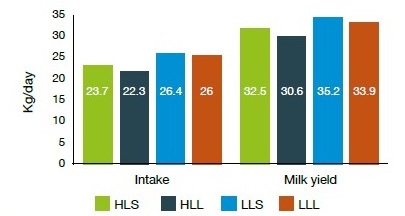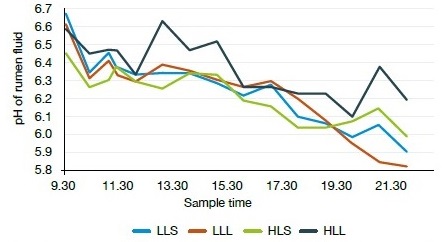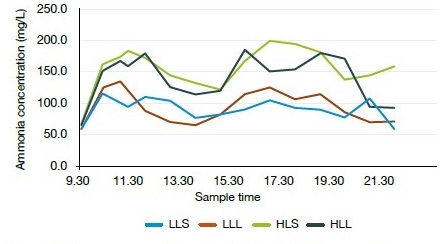- Home
- Knowledge library
- Effect of lucerne inclusion level and chop length on performance of dairy cows
Effect of lucerne inclusion level and chop length on performance of dairy cows

Effect of lucerne inclusion level and chop length on performance of dairy cows
The use of home-grown forages like lucerne can help offset the requirement for the UK to import protein feeds and chemical nitrogen (N) fertiliser. However, there is little known about how inclusion level or chop length affects milk yield and rumination parameters of dairy cows.
Purpose of our research
We tested the effect of replacing maize silage with lucerne silage, on:
- Production (Experiment 1: 16 mid-lactation dairy cows)
- Digestion and rumen function (Experiment 2)
Key findings
- The decision to grow lucerne as a replacement for grass silage to feed along with maize silage should be based on the suitability to grow the crop, and potential savings in fertiliser and feed costs, rather than an improvement in milk yield or quality
- Including lucerne in the diet allowed for a reduction in purchasing proteins, consistent with other studies within the research project
- Where high levels of lucerne need to be included in the diet (0.75 of forage), short chop lengths are advisable
- In high-yielding cows receiving maize silage, inclusion of lucerne at 20–60% had little benefit in comparison with a good first cut silage
What did we do?
- In both experiments, lucerne was harvested at the 10% flowering stage and cut to two lengths
- These were included either at 25% or 75% of the forage DM to give four diets:

Experiment 1 - results
- Intake was lower for cows offered higher levels of lucerne and where chop length was longer
- Milk production followed a similar trend

- Milk fat (3.76%) was not affected by diet
- Milk protein was higher where lucerne was included at 0.75 of the forage (3.11 vs. 3.04%)
Experiment 2 - results
- Rumen pH and ammonia were higher at higher lucerne inclusion levels, with HLL having greatest effect on both
- The HLL diet had the lowest VFA concentrates, reflecting the level of intake and digestibility of the diets, which were also lowest among the treatments


- Shortening the chop length (HLS & LLS) improved diet digestibility and VFA concentrations
- Shortening the chop length also reduced diet sorting
Topics:
Sectors:
Tags:

